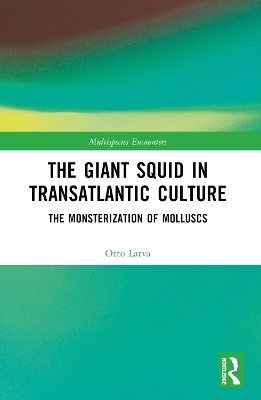
The Giant Squid in Transatlantic Culture
Routledge (Verlag)
978-1-032-31864-6 (ISBN)
- Lieferbar (Termin unbekannt)
- Versandkostenfrei innerhalb Deutschlands
- Auch auf Rechnung
- Verfügbarkeit in der Filiale vor Ort prüfen
- Artikel merken
This book builds upon the extensive study of the historical relationship between sea animals and humans in transatlantic culture during the eighteenth and nineteenth centuries. It exposes the present understanding of the human relationship with the giant squid not only as too simplistic but also as historically inaccurate. For instance, it redefines the earlier understanding that humans and especially seafarers have understood giant squid as horror-evoking and ugly creatures since the dawn of history and explains the origins of mythical sea monsters such as the Kraken. The book is, however, more than a critical response to previous work. It will point out that animals such as cephalopods, which have largely been defined in biological contexts in recent times, have a fascinating and multivariate past, entangled with the history of humans in many remarkable ways. Hence, this book is not just about perceptions of giant-sized squid or cephalopods, but a historical inquiry into the transatlantic culture from the late eighteenth century to the turn of the twentieth century. It will provide new knowledge about the history of mollusc studies, seafaring culture and more broadly of the relationship between humans and animals during the period.
Otto Latva is a historian focusing on human-animal and human-plant studies as well as environmental history. He has studied widely the early modern as well as the nineteenth-century and twentieth-century societies and cultures. In his previous studies, Latva has especially investigated the shared history of humans and animals and the long-term understanding of the marine environment. He is currently working as a university lecturer in Cultural Heritage Studies at the University of Turku, Finland. He also leads a research project Disappeared, Endangered and Newly Arrived Species: The Human Relationship with the Changing Biodiversity of the Baltic Sea (HumBio), funded by the Academy of Finland.
List of figures
Acknowledgments
Abbreviations
Introduction: Humans, Cephalopods, and History
Part I: The Era of New Ideas and Far-Reaching Seafaring, 1763–1802
1. The Late Eighteenth-Century Encounters with Giant-Sized Squid
2. Narratives and Enlightenment Theories
Part II: The Years of Uncertainty and Discovery, 1802–61
3. The Early Nineteenth-Century Encounters with Giant-sized Squid
4. The Enormous Squid, Zoology, and the Public Discussion
Part III: The Period of Cephalopod Monsters, 1861–99
5. The Late Nineteenth-Century Encounters with Giant-sized Squid
6. The Enormous Squid in Scientific and Public Discussion in the 1860s
7. The Emergence of the Giant Squid and how it Became a Monster
Conclusion
Index
| Erscheinungsdatum | 16.10.2024 |
|---|---|
| Reihe/Serie | Multispecies Encounters |
| Zusatzinfo | 2 Line drawings, black and white; 28 Halftones, black and white; 30 Illustrations, black and white |
| Verlagsort | London |
| Sprache | englisch |
| Maße | 156 x 234 mm |
| Gewicht | 500 g |
| Themenwelt | Naturwissenschaften ► Biologie ► Zoologie |
| Sozialwissenschaften ► Soziologie | |
| ISBN-10 | 1-032-31864-3 / 1032318643 |
| ISBN-13 | 978-1-032-31864-6 / 9781032318646 |
| Zustand | Neuware |
| Haben Sie eine Frage zum Produkt? |
aus dem Bereich


